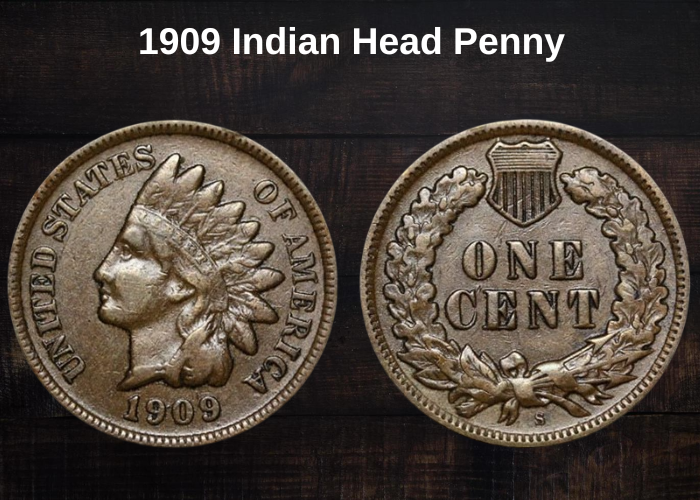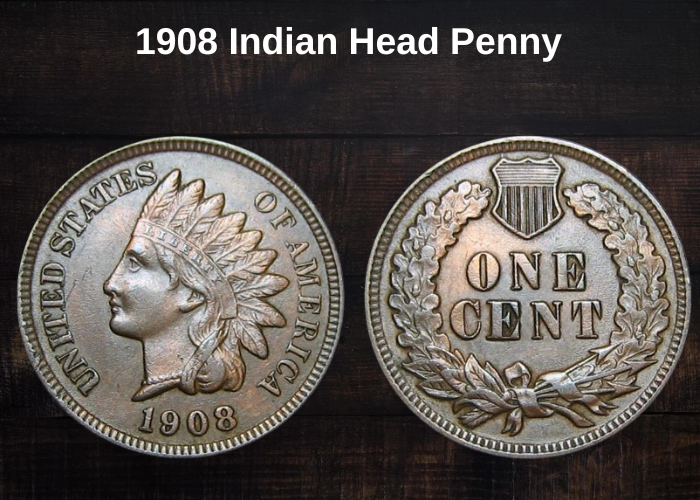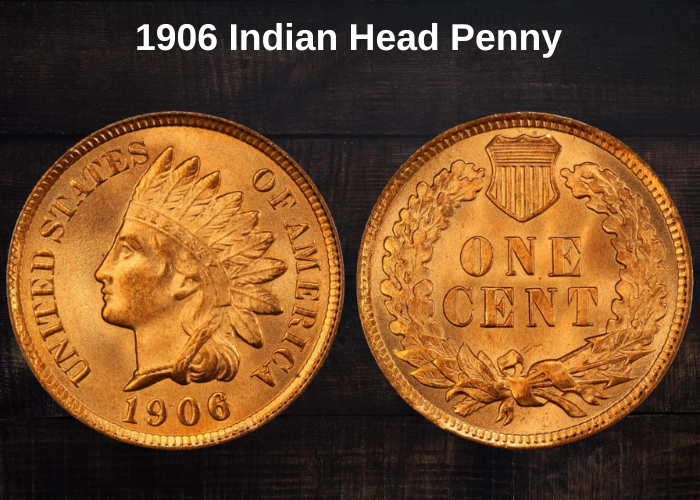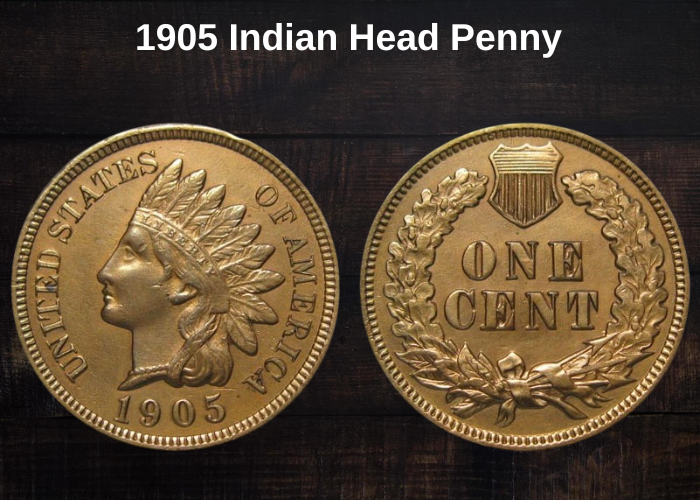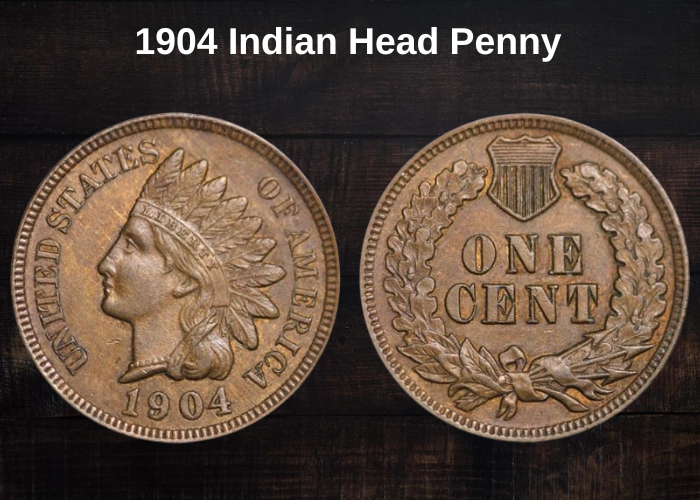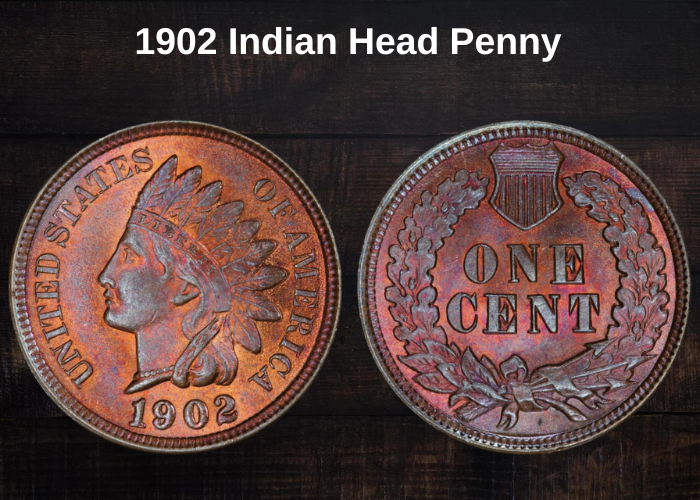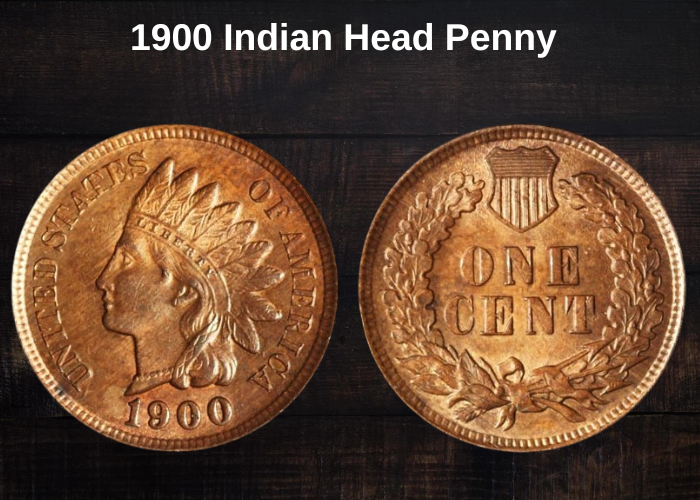The 1903 Indian Head Penny is highly regarded among collectors, with its price varying based on the coin’s condition, coloring, and whether it’s a business strike or proof coin. Below are the value charts for the 1903 Indian Head Penny:
1903 Indian Head Penny (Business Strike) Value
| Coin | MS 60 | MS 63 | MS 65 | MS 66 | MS 66+ | MS 67+ |
|---|---|---|---|---|---|---|
| Brown | $55 | $80 | $150 | $550 | – | – |
| Red-Brown | $60 | $110 | $275 | $1,250 | $2,150 | – |
| Red | $80 | $165 | $850 | $1,800 | $2,400 | $20,000 |
1903 Indian Head Penny (Proof) Value
| Coin | PR/PF 60 | PR/PF 62 | PR/PF 64 | PR/PF 66 | PR/PF 67 | PR/PF 68 |
|---|---|---|---|---|---|---|
| Brown | $135 | $170 | $375 | $1,350 | – | – |
| Red-Brown | $160 | $225 | $525 | $1,500 | $6,000 | – |
| Red | $190 | $235 | $675 | $2,250 | $6,000 | $42,500 |
| Cameo | $275 | $325 | $1,400 | $4,250 | $15,500 | – |
History of the 1903 Indian Head Penny
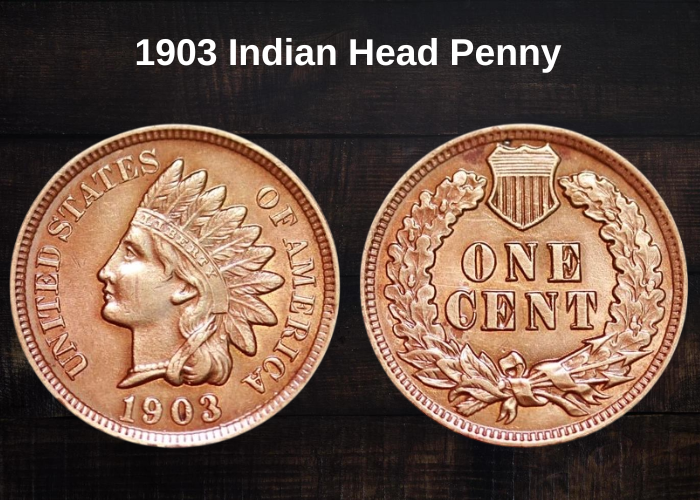
The Indian Head Cent, also known as the Indian Head Penny, was the second series of small cents produced by the U.S. Mint. Before this series, pennies were much larger, measuring 28.5mm in diameter. However, in 1856, when copper prices surged, the Mint reduced the size of the coin to 19.05mm to keep the melt value lower than its face value. This change helped ensure the coin remained profitable for the Mint, a status it held until the 1980s.
The first series of small cents, the Flying Eagle Penny, was difficult to manufacture due to its high relief on both sides. To solve this issue, the Mint switched to the Indian Head Penny in 1859, which continued production until 1909. Both designs were created by James B. Longacre, who served as the 4th Philadelphia Chief Mint Engraver from 1844 until his death in 1869.
In 1864, Longacre added his initial (“L”) to the design of the Indian Head Penny, marking the year of his inclusion. That same year, the penny’s composition changed from 88% copper and 12% nickel to 95% copper with 5% tin, zinc, or a mix of both. These coins were exclusively minted in Philadelphia during this period, which is why they lack mint marks.
Lastly, it’s important to note that business strikes (or regular strikes) were the types of coins minted for circulation, meaning they were designed for everyday use and distributed widely to the public.
Circulating Cents vs. Proof Pennies
Proof coins, unlike regular business strike coins, are specially crafted using dedicated dies designed to create highly detailed, mirror-like finishes. These coins are often part of mint sets and are intended for collectors, not for circulation. In 1903, the Indian Head Pennies were produced with mirror-like finishes, but this changed in 1909 when the Lincoln Cent introduced a matte proof. That year also marked the first time that some business strike cents were minted in San Francisco.
As for the design of the Indian Head Cent, James B. Longacre chose a feathered tiara for Lady Liberty, which he felt symbolized the United States. Prior to this, earlier coins had used the Phrygian Cap to represent liberty, but Longacre associated that cap with emancipated slaves, as it was worn by them. Interestingly, James Ross Snowden, the Mint Director at the time, had initially suggested using Christopher Columbus as the figure on the coin.
However, Longacre argued against using Columbus, fearing the public would reject a colonialist explorer as a symbol of the nation. There was also a rumor that Longacre’s daughter, Sarah, had posed for the face of Lady Liberty, but both Longacre and Sarah denied this, insisting that the inspiration came from the classical sculpture of the Crouching Venus.
This fascinating mix of artistic influence and historical debate makes the Indian Head Penny not only a significant coin but also one steeped in cultural and design history.
Features of the 1903 Indian Head Penny
The Obverse of the 1903 Indian Head Penny
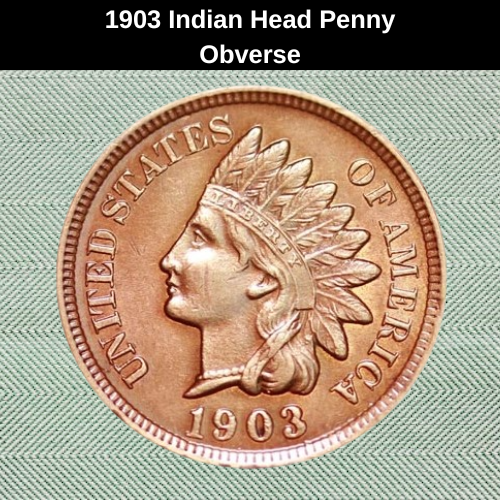
The coin features a youthful depiction of Lady Liberty, adorned with pearls and a feathered tiara. Designer James B. Longacre’s initial “L” appears next to the back feather in her hair. The headband across her forehead reads “Liberty,” while “United States” is placed in front of her face, “Of America” arches behind her head, and the date is displayed below her.
The Reverse of the 1903 Indian Head Penny
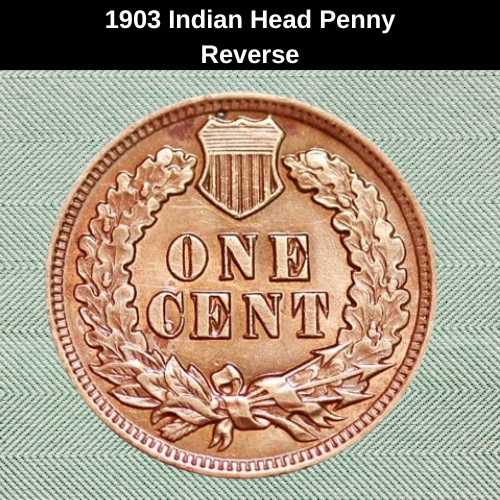
The reverse side features a wreath composed of oak at the top and laurel at the bottom, tied together by a ribbon. The ribbon holds three arrows, symbolizing the first three members of the Union. At the top opening of the wreath is a striped shield. In the center of the coin, the denomination “One Cent” is prominently displayed.
Other Features of the 1903 Indian Head Penny
The coin has a diameter of 19.05mm and weighs 3.11g, made of 95% copper with the remaining 5% consisting of zinc, tin, or both. It lacks reeds but features denticles (beading) along the front and back rims. While the front design remained consistent throughout its production, the reverse design underwent a change between 1858 and 1859.
1903 Indian Head Penny Grading
In addition to the Sheldon Scale grades from 1 to 70, American pennies also have color grades to help further define their condition. These grades are as follows:
- RD (Red) – The highest grade, showing a bright, red appearance.
- RB (Red-Brown) – A combination of red and brown color.
- BN/BRN (Brown) – The lowest color grade, showing a mostly brown appearance.
Proofs that aren’t graded as DCAM (Deep Cameo) or CAM (Cameo) will also be rated in terms of their color, with RD, RB, or BN/BRN as the possible categories.
The grading scale for coins goes as follows:
- 1 (Basal State-1) – The lowest grade with significant wear.
- 2 (Fair) – Heavily worn, with details barely visible.
- 3 (Very Fair) – Poor condition, but some details still visible.
- 4, 5, 6 (Good) – Still identifiable, but heavily worn.
- 7, 8, 10 (Very Good) – Clear outlines, but heavy wear.
- 12, 15 (Fine) – More definition and detail.
- 20, 30 (Very Fine) – Well-defined features with only minor wear.
- 40 (Extremely Fine) – Slight wear on high points.
- 50 (About Uncirculated) – Almost perfect with slight wear on the highest points.
- 60, 65, 70 (Mint State) – No wear, with a full strike and luster intact.
Understanding these grades and color distinctions is essential to determining the value of your coin.
1903 Indian Head Penny Value Guides
The value of 1903 Indian Head Pennies is primarily influenced by factors such as errors, condition, and the timing of the sale. Since these pennies were only minted in Philadelphia and lack mint marks, their place of origin doesn’t play a significant role in their value. However, factors like the condition of the coin, the presence of errors, and when the coin is sold can affect its price. Additionally, demand tends to rise during anniversary years, providing an opportunity to sell for a higher price if timed well. Let’s take a look at some confirmed sales records for context.
1903 Indian Head Penny Value

In 1903, the Philadelphia Mint produced 85,092,703 Indian Head Pennies. The value of these coins has fluctuated over time depending on their condition and rarity. For example, an MS 60 BN penny sold for $4,600 on February 16, 2001, but its value has decreased to $55 by September 2024. The highest-known grade for these pennies is MS 66 BN, with only three submissions, and it’s worth about $550 in September 2024.
A more recent MS 66+ RB penny sold for $2,150 on July 27, 2023, with PCGS having only graded one coin at this level so far.
In the red zone, an MS 67 RD penny fetched $17,250 on November 4, 2004, but with nearly 20 examples in circulation, its value has decreased to $8,500 by September 2024. However, the estimated value for an MS 67+ RD penny in September 2023 is about $20,000, with the most recent sale for such a coin at $15,000 in April 2021. An MS 67 RD penny sold for $9,000 in July 2023.
1903 Proof Indian Head Penny Value
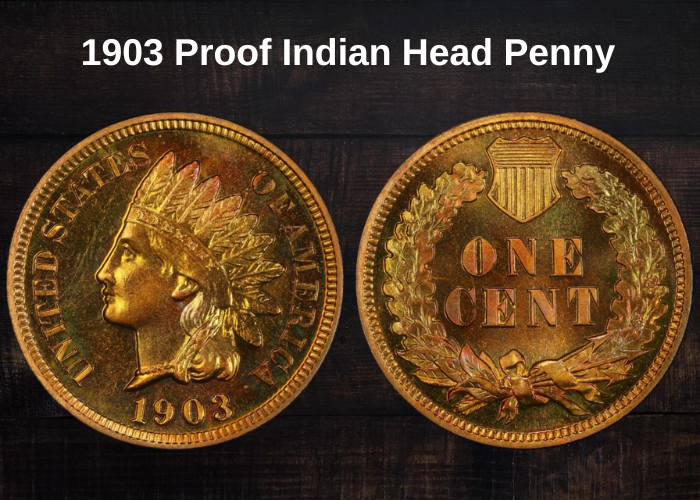
Proof pennies serve multiple purposes, including showcasing a sample of the perfect coin, which is then archived, and generating additional revenue for the mint by being sold at premium prices. The process of creating proof pennies involves burnishing the blanks (planchets) by tumbling them in a vat with 6mm stainless steel balls, which creates a mirror-like finish.
To enhance the glossiness of the shiny parts of proof dies, they are scrubbed with horsehair brushes, while the textured parts are treated either with acid or lasers to frost them. With acid-washed coins, the effect slightly fades every time the die strikes a blank. The earliest 50 to 100 proofs usually have the most pronounced contrast between the field and frost, earning them the “Deep Cameo” grade.
The following 50 to 100 proofs may receive a “Cameo” grade. However, with newer coins produced with computerized lasers, the haze remains consistent, and all of these coins are graded as “Deep Cameo” or “Ultra Cameo.”
In 1903, the Philadelphia Mint produced 1,790 Proof Indian Head Pennies. For example, a PR 66 BN was valued at $3,220 in 2006 but is now worth only $1,350. On the other hand, a PR 65 CAM sold for $1,920 on October 10, 2021, and a PR 67 CAM is currently valued at $15,500.
Rare 1903 Indian Head Penny Errors List
Mint errors can significantly increase a coin’s resale value, especially those classified as “First Strike Errors.” These errors are particularly valuable because they were identified, confirmed, and verified within the first 30 days after the coin’s initial release. First Strike Errors are often cataloged using “FS numbers” for easy identification and tracking.
Among the most well-known and sought-after First Strike Errors for the 1903 Indian Head Penny are repunched dates and misplaced dates. These errors occur when the minting process results in a second impression or misalignment, creating an unusual appearance on the coin. These rare mistakes make the coins much more collectible and can significantly raise their market value.
1903 Indian Head Penny Broadstruck Error
A broadstrike error occurs when the coin’s rim or collar is deformed during the minting process, causing the coin to become flatter in that area. This usually happens when older three-piece collar molds separated too soon during the coining process. As a result, the metal spreads out and becomes misshapen in the affected section, since there’s nothing to hold its form and thickness.
Even coins with a low grade, such as VG 8 BN, can still sell for around $55 if they exhibit this broadstrike error. Collectors value these coins because of their unusual shape, which adds to their rarity and appeal.
1903 Indian Head Penny Curved Clip
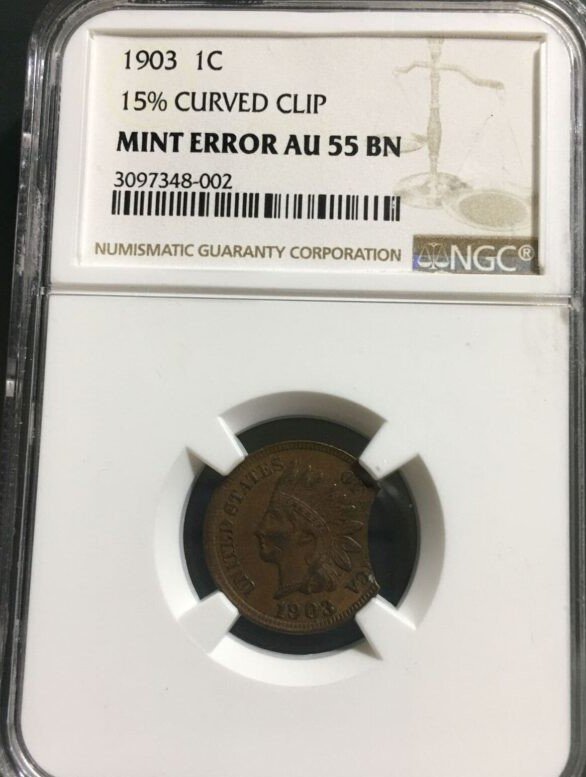
Clipped planchets occur when a portion of the metal disc intended to become a coin is missing due to the re-use of leftover planchet material with holes. These errors can add value to a coin, depending on the extent of the clip and the coin’s condition. Coins with clips are considered unique due to their rarity, but the condition, like AU (About Uncirculated), affects their price. Although not extremely expensive, they are still more valuable than regular coins without errors.
1903 Indian Head Penny Double Strike Error
That’s correct! The key difference between a double strike and a doubled die lies in the way the errors occur:
- Doubled Die: This happens during the creation of the die itself, where the hub (the tool used to make the die) strikes the die multiple times, creating a doubled image that appears on every coin minted with that die. The error is permanent and appears on all coins from that die. It often creates a more noticeable doubling effect, which can be valuable depending on the degree of the error.
- Double Strike: This error occurs when a coin is struck more than once, with the second strike happening slightly off-center, typically due to the coin moving between strikes. Unlike doubled dies, double strikes are unique to a single coin and don’t affect the entire mintage. The coin with a double strike can still carry value, especially if the misalignment is dramatic, like the one you mentioned with a VG 8 grade, which sold for $275.
The important distinction is that doubled die errors are permanent, affecting all coins made from that die, while double strikes happen to individual coins due to a mishap in the striking process.
1903 Indian Head Penny Double Struck 65% Off-Center
That’s a fascinating example of a double strike with a unique twist! In this case, the coin didn’t just flip before the second strike like the previous one, but instead, it shifted out of alignment during the striking process, which resulted in a parallel design with an off-center overlap. This effect can cause the coin to appear distorted or deformed, which adds to its rarity and collectibility.
Because of the double strike happening on the same coin, the overlapping design adds visual interest and uniqueness, making it a valuable collectible. The fact that it was graded MS 62 BN and sold for over $900 shows just how much such a rare minting error can increase the value of a coin, especially when the condition is still relatively high despite the strike error.
This kind of error can make the coin much more interesting to collectors, particularly those who focus on minting mistakes or coins with unique characteristics.
1903 Indian Head Penny 10% Off-Center
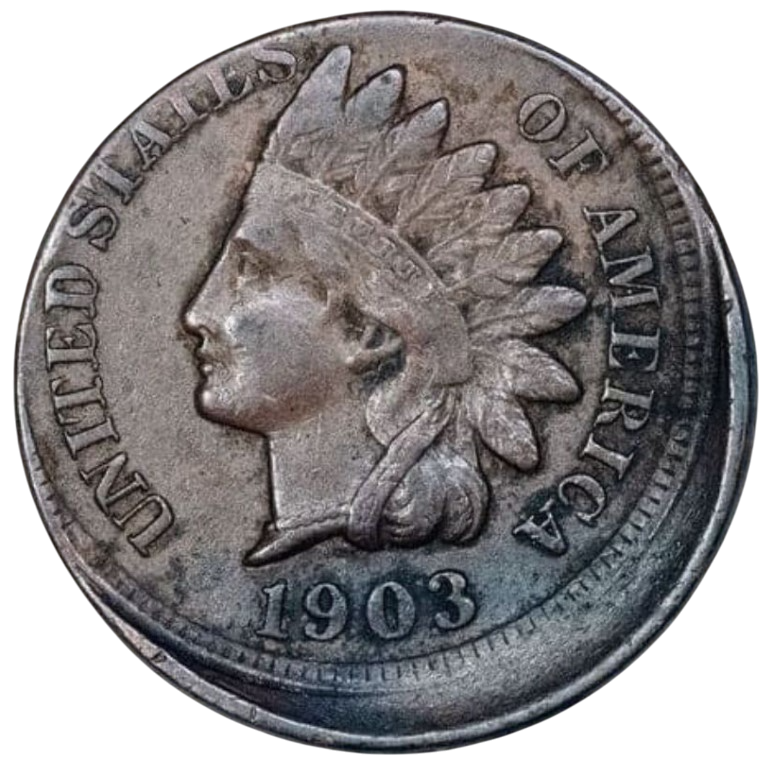
These examples showcase coins with off-center strikes, which occur when the planchet is misaligned during the minting process, resulting in part of the coin being struck outside of the die. Depending on the degree of misalignment, these coins can become highly collectible and increase in value, especially when they are in higher grades.
- The 10% misalignment on the right side, graded AU 55 BN, sold for $250. A relatively small misalignment, but still enough to make the coin unique.
- The 35% misalignment on the southern obverse, graded AU 58, sold for $380. A larger misalignment like this increases the coin’s rarity and thus its value.
- The 15% off-center coin, graded MS 64 BN, sold for $490. This coin, in Mint State (MS), means the coin is in excellent condition with a noticeable but still moderate off-center strike.
Off-center coins with a higher degree of misalignment typically fetch higher prices, as collectors value their rarity and visual appeal. These coins, depending on the grade and the extent of the error, can become significant additions to a collection.
1903 Indian Head Penny MPD Error FS-301 and FS-302
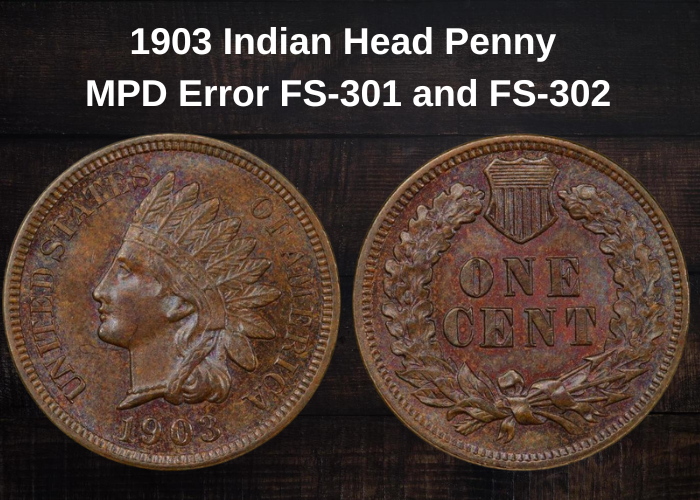
A misplaced date (MPD) is an error where a digit from the date accidentally lands in the wrong spot on the coin, creating a visible anomaly. One common type is when the extra 1 from 1903 appears in Miss Liberty’s neck. These errors can be categorized with different “FS” numbers, representing specific errors recorded by collectors.
Here are a few examples:
- The F 12 BN FS-301, which shows a misplaced 1 from 1903, sold for $198 on 23rd June 2013.
- An MS 64 BN FS-301 is valued at $250 in September 2023. The higher grade results in a more valuable coin.
- A MS 63 RB FS-302, another variation of the misplaced date error, sold for $200 on 6th March 2019.
- An MS 64 RB FS-302 is worth $285 today, reflecting its higher quality and grade.
MPDs are sought after by collectors due to their rarity and the visible flaw, which makes them distinctive. The value of these errors increases with the grade, as higher-quality coins are more desirable for collectors.
1903 Indian Head Penny RPD Error FS-303 and FS-304
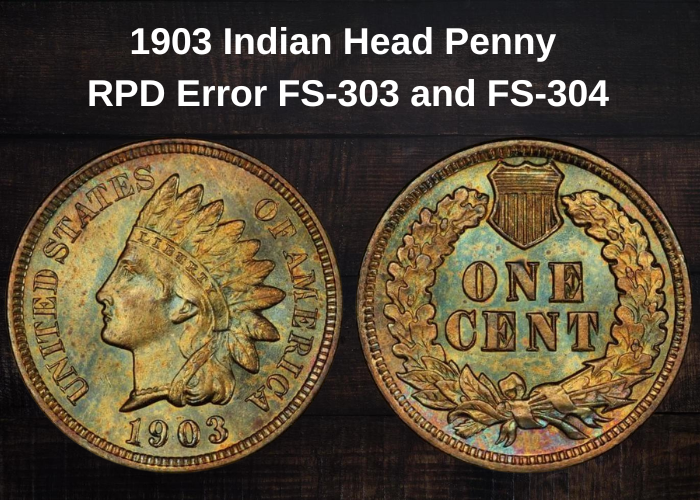
A repunched date (RPD) is a type of doubling error where one or more digits of the date are stamped onto the coin twice, causing the date to appear doubled in the same location.
Here are some examples of how RPDs are valued:
- FS-303:
- An MS 64 BN is valued at $250.
- An MS 64 RB can fetch $285.
- A damaged coin graded Uncirculated Details was listed for $160 on eBay.
- FS-304: This one is rarer and more expensive:
- An AU 58 BN sold for $495 in 2014.
- An MS 65 RD reached $1,425 in 2018, reflecting its higher grade and better preservation.
The RPD errors are considered highly collectible, especially when they are in good condition. As with other coin errors, higher grades significantly increase the value of these coins.
1903 Indian Head Penny FAQ
How Much Are 1903 Indian Head Pennies Worth?
The value of a 1903 Indian Head Penny depends on its condition, grading, and rarity. Here’s a breakdown of its estimated worth:
- MS 67+ RD: This is a high-grade coin, and it can fetch $15,000, with one such coin sold in 2021.
- PR 68 RD: A very rare coin in excellent condition can go for up to $42,500 as estimated by PCGS in 2023.
- MS 60: For coins with lower grades, you can expect to see them valued between $50 and $70.
- PR 60: Proof coins in similar condition can range from $130 to $175.
These values can fluctuate depending on factors such as market demand, the coin’s specific condition, and any unique features or errors that might increase its rarity.

